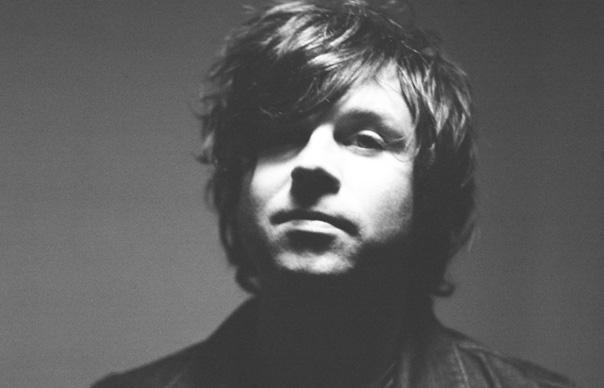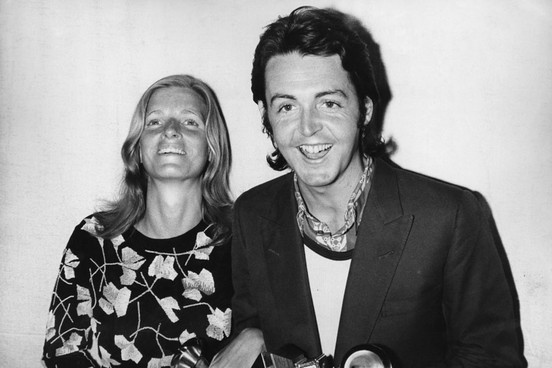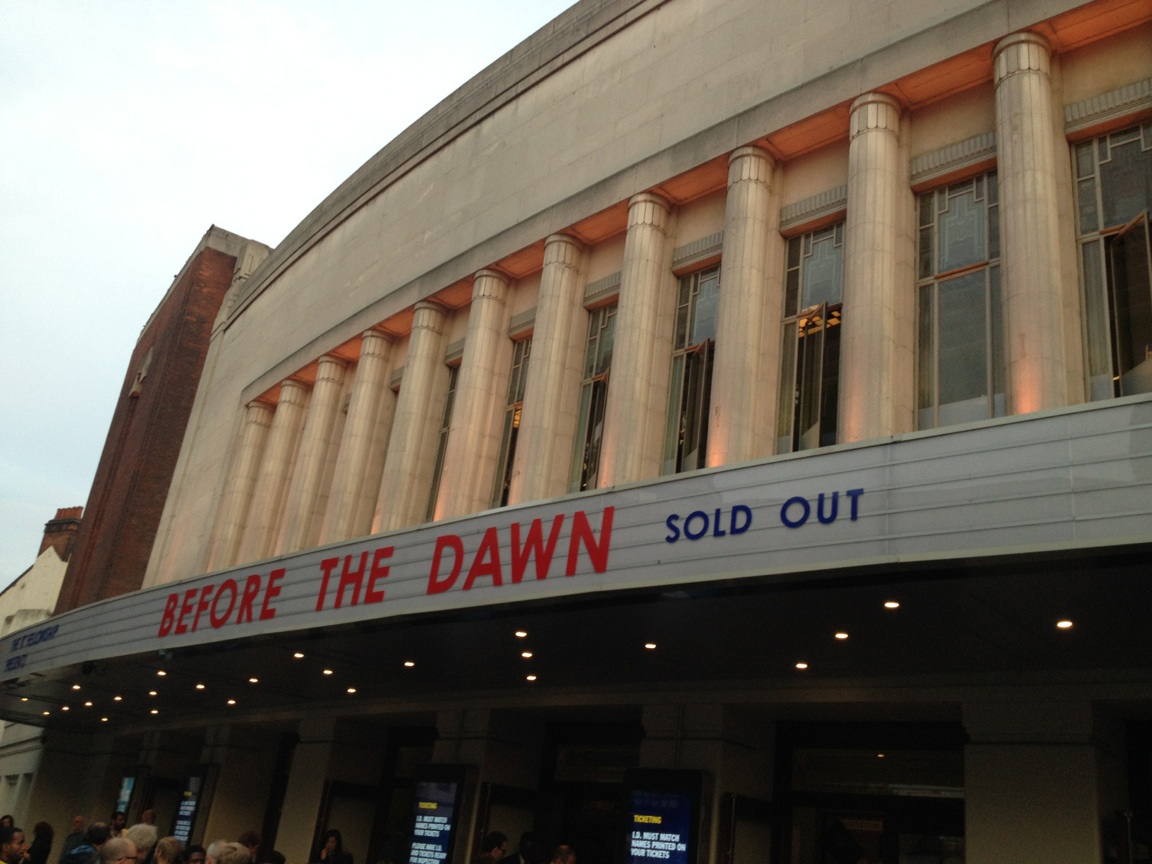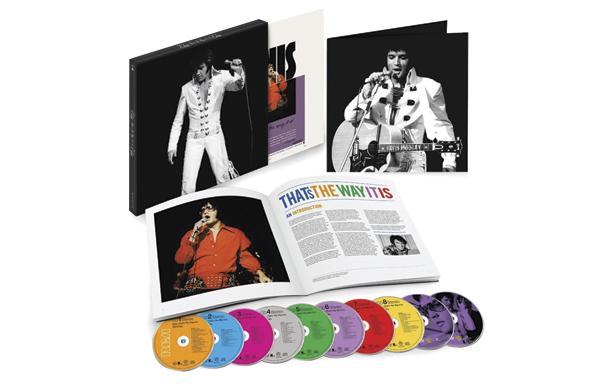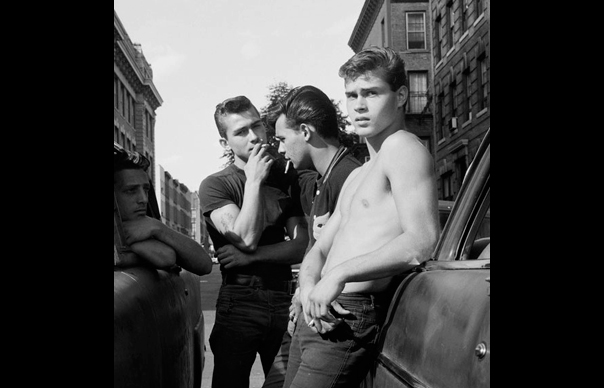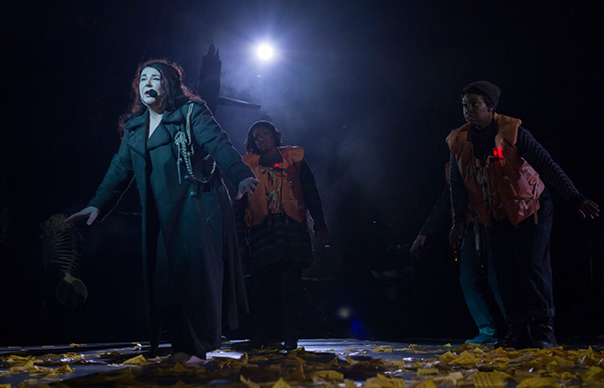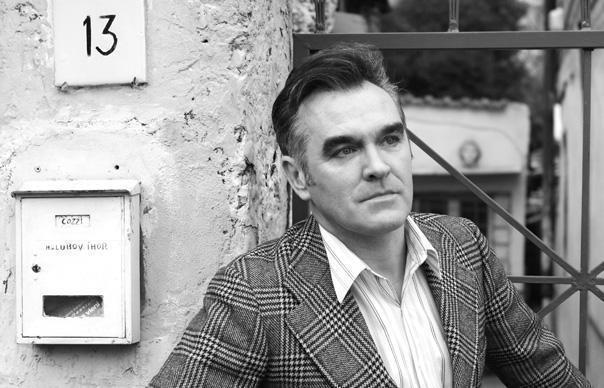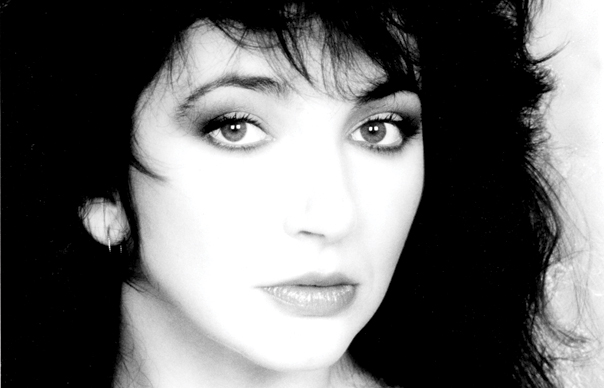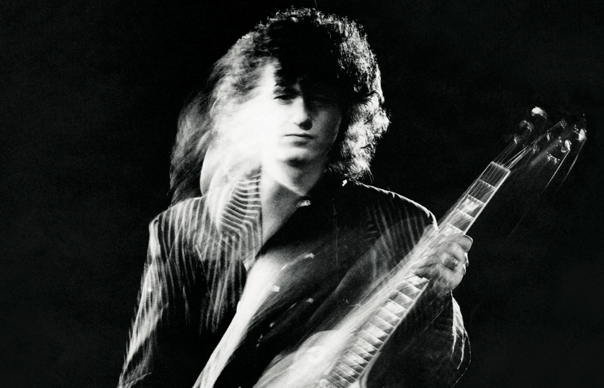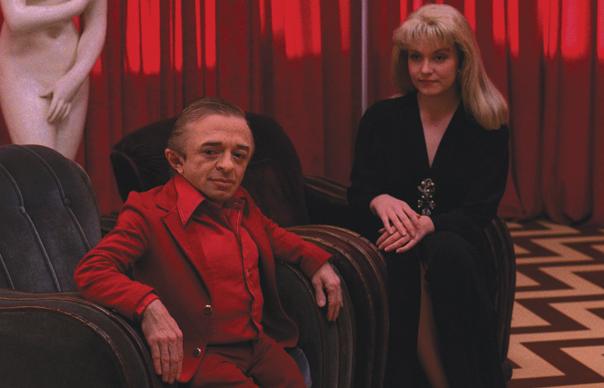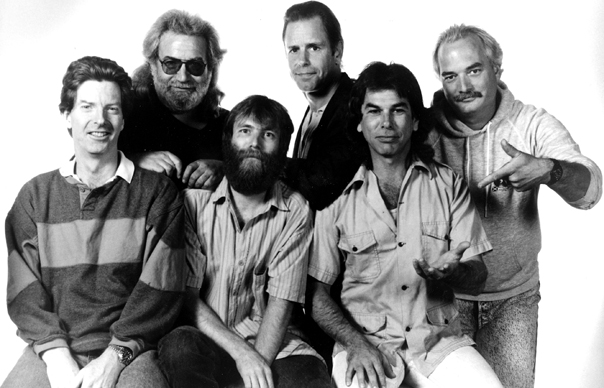Tonight, August 26, Kate Bush returns to the stage for her first live shows in 35 years. To celebrate, here’s our cover story from the archives (June 2010, Take 157), in which Uncut takes a phantasmagorical trip into suburbia to learn the untold story of Kate Bush’s masterpiece, Hounds Of Love. “She ain’t daft. People shouldn’t be fooled by the mystical hippy stuff, this girl is very, very tough.” Story by: Graeme Thomson
__________
In May, 1981 Bush entered London’s Townhouse Studios to start work on her fourth album, The Dreaming. She was, at that time, Britain’s most popular female artist – her first album, 1978’s The Kick Inside, had sold over a million copies on the back of her No 1 debut single, “Wuthering Heights”. The follow-up, Lionheart, had been a rushed and somewhat unresolved act of consolidation, but the sonically inventive Never For Ever, released in 1980, marked another huge leap forwards. It not only made Bush the first British female solo artist ever to have a No 1 album in the UK charts, but it also gave her another memorable hit single in “Babooshka”.
One of EMI’s most profitable and prestigious acts, Bush accrued greater power each step of the way. By the time of The Dreaming she was ready to produce herself, using a series of engineers on hand to help shape her ideas. And she had a lot of ideas. While dropping into sessions for Peter Gabriel’s third album to sing on “Games Without Frontiers”, Bush had been inspired by the record’s gated drum sound pioneered at Townhouse Studios; at the same time she’d become infatuated with the Fairlight CMI, a synthesiser that enabled musicians to sample sounds and play them back, either direct from the keyboard or by programming a sequence of notes. It was a glimpse of the future, one of the first stirrings of the nascent digital age.
On The Dreaming Bush envisaged combining these twin elements, applying a wide, wild palette of sounds to a foundation of hard rhythm. She abandoned the standard band-in-a-room approach and instead embarked on something more layered and opaque. She mic’ed up 12-foot long strips of corrugated iron to evoke the sound of cannons, or fed guitars through banks of harmonisers and reverb plates, sending the notes leaping up in octaves. Hugh Padgham, the producer credited with creating the gated drum sound, engineered the album’s early stages. “I couldn’t bear it after a bit, actually,” he says. “She didn’t really have any idea of the sonics and didn’t understand why, if you put 150 layers of things all together, you couldn’t hear all of them. She didn’t really want to listen. As far as I was concerned, when we were doing those sessions it sounded shit. It pissed me off, actually.”
But Nick Launay, fresh from recording PiL’s Flowers Of Romance, proved a better fit. He was only 20, and Bush was still just 22. “It really was like the kids are in control,” he says. “No rules. The way she would communicate was very much like an excited kid: ‘How do we make those characters and the feelings they have into music? Can we do this, can we do that?’ It was absolutely great, but it got very confusing at times. I don’t think she had any realisation of how complex her songs were – to her they were very simple.”
Living at the time in Eltham, south-east London, Bush felt an “air of doom” hanging over the city, and during the final Dreaming sessions with engineer Paul Hardiman the mood duly darkened. She had been troubled by the murder of John Lennon and a sense of paranoia wormed its way into “Leave It Open” (“My door was never locked, until one day a trigger came – cocking”) and “Get Out Of My House”, a disturbing account of physical and psychological violation that doubled as a commentary on the invasive nature of fame. Stretching into 1982, the last two months of the sessions coincided with the Falklands War, and she emerged at ungodly hours to be greeted with increasingly grim news. Del Palmer, her long-term boyfriend, bass player and budding engineer, likened coming up from the windowless basement studio to surfacing from a submarine.
The studio became an inclement place to work, a hostile micro-climate of smoke, chocolate, Chinese takeaways and far too little sleep. Towards the end “she was exhausted,” says Hardiman, who describes the final push as “hours of crippling tedium with occasional bursts of extreme excitement.”
Together, they created a character called ‘My Dad’, which involved donning a ginger wig and a pair of polystyrene cups with the bottoms removed which, when fitted over the wig, helped delineate the sound. “In times of ear fatigue these helped hugely,” says Hardiman, adding. “I am not making this up. They added focus.”
The album Bush delivered to EMI in the summer of 1982 was a brilliant, baffling act of secession from the pop mainstream. There was no “Babooshka”, no “Wow”, nothing which offered a foothold in terms of commercial accessibility. The title track – the second single released from the album – featured Rolf Harris on didjeridu and animal impersonator Percy Edwards pretending to be a sheep, while the album ended with Bush simulating a braying donkey. “It got to the point of the nearest album we ever returned to the artist,” says Brian Southall, the former head of artist development at the label. “There is a clause in all contracts that gives the record company the right to refuse, return, or object. From talks I had, that was the closest EMI got to returning an LP in my time. The trouble was, you couldn’t go back to Kate and say, ‘There’s no three-minute pop single on here.’ She’d say, ‘I know, I didn’t write one!’ It wasn’t part of her make up to start with, but there was a danger of her falling off the radar.”
Despite frequently being caricatured as an airy-fairy ingénue, Bush’s business savvy and artistic intransigence was already legendary. Backed by robust self-belief – and a tight-knit cabal of family, accountants and lawyers – she was highly adept at getting her own way. “She ain’t daft,” says Southall. “People shouldn’t be fooled by the mystical hippy stuff, this girl is very, very tough.”
As far back as 1977, EMI had wanted “James And The Cold Gun” rather than “Wuthering Heights” to be her first single. “She didn’t agree and nailed me to the floor,” recalls former EMI MD Bob Mercer, the man who signed Bush to the label. When “Wuthering Heights” became an unlikely No 1 her resolve seemed like a stroke of genius, and bought her a freedom and a power she relished. “To be honest, I pretty much lay down after that,” admits Mercer. “I realised what kind of artist I was dealing with and that my role here was to keep out of the way and not knock over the scenery. The attitude at EMI was always ‘Whatever you want.’ [We] let her march to her own beat.”
For the first time EMI’s largesse was put to the test. A single, “Sat In Your Lap”, was released in June, 1981 that would eventually appear on The Dreaming. With its multi-tracked choir of medieval Kates and thunder-clap electronic drums, it more than hinted at a contrary new direction. Arriving in September 1982, The Dreaming shifted only 60,000 copies, despite reaching No 3 in the album charts; as a single, the title track limped to No 48 while the follow-up, “There Goes A Tenner”, disappeared completely. Bush’s career had never been about simple number-crunching, but these poor sales figures drew concern from the label. Bob Mercer had left EMI by 1980, and although new boss David Munns was another ally of Bush’s, she later recalled that “for the first time I felt I was actually meeting resistance artistically.”
If Bush was disappointed at public reaction to The Dreaming, she remained stubbornly sure of its merits, declaring it her favourite album, the first occasion where she’d come close to hearing her ambitions reflected back at her. Typically unyielding, she successfully resisted pressure from EMI to bring in an outside producer for the next album – but she was aware that after The Dreaming she needed to deliver something not only artistically satisfying, but commercially viable.
Bush’s first intention was to fill her life with a blast of clean, fresh air. In 1983 she and Del Palmer moved out of London into a 17th-century farmhouse in the Kent countryside near Sevenoaks. “She bought the cottage, and suddenly you’d ring up and she’d be gardening,” recalls Brian Southall. She spent the summer outdoors, stocking up on fresh fruit and vegetables, returned to regular dance instruction for the first time in years, and generally finding inspiration in simple, natural things. “The stimulus of the countryside is fantastic,” she said at the time. “I sit at my piano and watch skies moving and trees blowing and that’s far more exciting than buildings and roads and millions of people.”
Rejuvenated by these changes, between the summer and autumn of 1983 she began working on new songs. Using piano, Fairlight and a Linn drum program, Bush and Palmer started recording at home straight to eight-track. These were not traditional demos, early scratchings to be referenced but ultimately discarded in favour of re-recorded versions. Instead, they were kept and built upon.
The first song to arrive was “Running Up That Hill”, composed in a single summer evening in her music room, looking over the valley below. Originally called “A Deal With God”, it spoke of Bush’s impossible wish to “swap places” with her lover so each could understand what the other felt and desired. It had a wider artistic significance. Bush relished singing and performing in character and has always resisted being defined by her background, her looks and her gender. Craving a 360 degree perspective, “Running Up That Hill” was an affirmation of her desire to cover all possible angles of available experience.
Built from the rhythm up, it provided a thrilling way in to the new record. The track’s most instantly recognisable components – the searing Fairlight riff, the rumbling electronic drums – were present from the very beginning. Paul Hardiman, who, alongside Palmer and Haydn Bendall, was again one of three principal engineers, first heard the song in October 1983 during an early meeting to discuss the new album.
“It wasn’t a demo, it was a working start, and we carried on working on the original,” he recalls. “Del had programmed the Linn drum part, the basis of which we kept. We spent time working on the Fairlight hook, but the idea was there, as was the wind-train sound and her guide vocal. It was obvious to me that Kate had finally found a groove. We worked a lot on the Fairlight part which, incredibly, reminded me of the synth line in ‘Atmosphere Strut’ by Cloud One. I was very happy to push the groove.”
Official recording began on November 4, with the transfer of the rough 8-track recordings onto two 24-track masters. There was no shortage of quality material. “And Dream Of Sheep”, “Under Ice”, “Watching You Without Me” and “Hounds Of Love” had come quickly, the latter a definitive expression of one of Bush’s recurring lyrical themes: the terror of being trapped by love. Portraying passion as a prowling beast with the singer its quivering quarry, Bush wanted the music to animate the lyrics. The rhythm track pounded like a heart in the throes of panic-stricken ecstasy, the scything strings added a manic element to the chase, and after three minutes of enthralling will-she-won’t-she came the climax: “I need la-la-la-la-la love!”
Composition, clearly, wasn’t going to be a problem. Despite the yawning gaps between albums, even today Bush often writes quickly and prolifically. Capturing the nuances of texture and mood, however, is more time consuming. For the first time, she was fully in control on Hounds Of Love, having installed a 48-track studio in a barn at Wickham Farm, the 350-year-old farmhouse in Welling where she was raised and where her parents still lived. Protected from London’s south-easterly sprawl by dense greenery and a high fence, the studio was a world apart, a place where Bush could create according to her natural rhythms rather than the exaggerated pace of the record industry.
“We had lovely times,” says Haydn Bendall. “You walked through the garden into the kitchen: all the family’s business and conversations took place around this huge kitchen table. [Her brother] Paddy was always around, and the two dogs were there, Bonnie and Clyde, the hounds of love on the album’s cover. There were pigeons and doves all over the place, her dad smoking his pipe and her mum making sandwiches. It was idyllic.”
As a child she had often retreated to the mouse-riddled barn, making her earliest musical forays on a dilapidated pump organ stored there. Later, she had installed a makeshift eight-track studio, demoing much of Lionheart there with her pre-fame pub combo, The KT Bush Band. Completed in the autumn of 1983, the new studio was an altogether more professional environment. The recording booth might once have been a stable, but now the place was crammed with hi-spec equipment. She was very much at home surrounded by technology, according to Bendall: “She’d come up with lots of suggestions like, ‘Maybe we should compress that, maybe we should expand that, maybe we should gate that or put a pre-delay on the reverb.’ And she had an incredible audio memory. She’d remember a take she did on a vocal where one particular word was great, or that on track 13 there was this great sound.”
There was an elemental force roaring through Bush’s new music. If the defining lyric on the jittery, introverted The Dreaming had been “harm is in us”, on Hounds Of Love it was “That cloud looks like Ireland!”, from “The Big Sky”. The album was filled with references to the natural world, not only in countless lyrical mentions of the sun, rain, wind and clouds, but also waves, sea, ice and storms. As soon as she had written the beautiful piano ballad “And Dream Of Sheep” and its darker companion piece “Under Ice”, Bush foresaw a record with two distinct sides, one of strong individual ‘up’ songs and another of darker, interwoven pieces. Strung across seven tracks on the record’s second side, “The Ninth Wave” recounted the tale of a girl cast adrift in the water at night following some undefined catastrophe, awaiting rescue, trapped between a waking nightmare and dreams. It distilled many of Bush’s recurring obsessions: water, witchcraft, death, the supernatural, the power of the senses, the frail line between reality and fantasy.
“The Ninth Wave” appeared daunting – Melody Maker’s otherwise positive review shuddered in its boots at the mere idea of it – but in “And Dream Of Sheep”, “Hello Earth” and “The Morning Fog” it contained some of her very finest, most awesomely affecting songs. Of course, it also featured chattering Geordies, harsh helicopter blades and violent witch-drowning, but that’s the beauty of Hounds Of Love: the deeply emotional and thrillingly berserk sit side by side.
The narrative thread may have been somewhat tangled, but as a travelogue through the seemingly boundless expanses of Bush’s own imagination “The Ninth Wave” was compelling stuff. “When she got into the studio she was like a Yogi,” observes friend and erstwhile dance partner Stewart Avon Arnold. “She was completely lost to the world.” Lost to this world, perhaps, but clearly connected to some other realm. The title of “The Ninth Wave” was taken from a passage of Tennyson’s 1869 poem The Holy Grail, a reference that felt particularly resonant. Part pop record, part epic romantic poem, Hounds Of Love “has a mystical, bardic quality that’s part of our ancient British tradition,” says Youth, who lent his loping, leggy bass sound to “The Big Sky”. “It’s not overt, it’s hidden, and I love that.”
On the title track Bush evoked the Arthurian legend of the Lady of the Lake, taking “two steps on the water” as symbolic hounds tore through the English countryside. “Waking The Witch” vividly dramatised medieval witch trials, while on “Under The Ivy”, a heart-stopping piano ballad released as the b-side to “Running Up That Hill”, she sang of “the white rose”, the ancient English heraldic symbol. On “Under Ice” she sounded like an ancient, malevolent Ice Queen sweeping down from some mythical northern kingdom. Such ancient allusions may not have been entirely conscious, but they were not coincidental. Rooted deep in its own history, with its 18th-century rose garden thick with ivy and honeysuckle, Wickham Farm felt like a bridge to another, older world, and something similarly mythic seeped into the music.
No invites were extended to EMI execs during the sessions. Refining the methods used on The Dreaming, her working practices became even more isolated. Often she recorded for long periods with only Palmer and perhaps another engineer in the studio, calling in musicians to add live texture when required. It was a thoroughly modernist approach. “It gives the album a slightly futuristic atmosphere,” says Youth. “She gave me some direction, let me do what I liked, then she chopped it up and arranged it in the Fairlight. It doesn’t have that natural dynamic arrangement and progression that you have with musicians playing together – it’s quite flat and modern. People work like that today all the time, but then it was quite unusual. It was about selection rather than musicianship, the currency of ideas reflected in the music rather than academic virtuosity.”
Youth was there because Bush loved his former band, Killing Joke. She cast musical parts rather like a movie director casting cameos, hiring experts in their field – renowned conductor Richard Hickox, classical guitarist John Williams – alongside tried and trusted session men. Stuart Elliott, Bush’s long-serving drummer, either added to the existing Linn drum patterns – on “Running Up That Hill” he simply overdubbed a snare part – or replaced them. Guitarist Alan Murphy made a particularly effective contribution to “Waking The Witch” and added explosive counterpoints on “Running Up That Hill”, while bass was democratically deployed between Del, Eberhard Weber, Danny Thompson and Youth. “It was a fantastic experience,” Youth recalls. “A driver turned up at my house, a nice guy in a Volvo, and we’d go down to the farm. I went down two or three times and it was very cosy. About 11 o’clock her mum would come in with cakes and tea and we’d have elevenses, and then we’d work until late afternoon, sometimes early evening.”
Her parents and brothers Jay and Paddy were always popping in and out, contributing ideas, playing instruments, singing and generally offering support. “We’d be there doing a track and suddenly Jay would turn up to say hello,” says drummer Charlie Morgan. “Paddy would come in and start talking to Kate about a mandolin part he had an idea for, and Kate would say, ‘OK, let’s put that down tomorrow’. Then her mum would come in with a tray stacked high with teapots and cakes and we’d all have a cup of tea, and then Dad would come in and say, ‘What are you going to eat tonight? I’ll go and get a take out, what do you fancy, Indian or Chinese?’ It was all so conducive to creativity.”
The album sessions briefly moved to Ireland in the spring of 1984. Bush’s mother, Hannah, hailed from County Waterford and her love of Irish music had gradually found its way into her daughter’s work. Having used traditional instrumentation on The Dreaming, at Dublin’s Windmill Lane she added bouzouki, pipes, fiddles and whistles. Dónal Lunny later recalled how Bush asked him to play the single whistle note at the end of “And Dream Of Sheep” for three straight hours until she heard the desired ‘bend’ in the note.
She was a notoriously hard taskmaster, often driving musicians to distraction trying to capture the atmosphere she wanted. “She would do lots and lots of takes and I could never understand why,” says Max Middleton, who played organ on Never For Ever. “Normally with other musicians we’d do it again because it was too fast or slow or you’re playing the wrong chord – something very definite – but she was looking for something nebulous that was hard to pinpoint. She wasn’t doing it again out of sheer belligerence, she was looking for something that no one else could see.”
On her return to Wickham Farm she added more rhythm to the delirious “Jig Of Life”, written and recorded in Ireland, filling 24 tracks with the clacking, beating and booming of assorted Irish percussive instruments. “I came back from that on cloud nine from being thrown the gauntlet and saying, ‘OK, we’re going to do something completely different here’,” recalls drummer Charlie Morgan. “I think Stuart [Elliott] and I did some of the best stuff we ever did with Kate, because there were no rules or barriers. It was pure creativity.”
“The Big Sky” was a prime example of her obsessive, ruthless approach to recording. The song underwent three dramatically different incarnations until it was right. “Kate would work on a track for ages and ages, it might cost a lot of money and time, but if she didn’t like it she’d scrap it but still retain faith in the song and record it in a completely different way with different people,” says engineer Haydn Bendall, who joined the sessions in the summer when Paul Hardiman had recording commitments elsewhere. Unlike Hugh Padgham, Bendall never felt Bush lost her way.
“She has an incredible, innate sense of what works for a song. She has an extremely clear impression of the atmosphere she wants to create, but how she achieves that involves experimentation. On Hounds Of Love we were using Fairlight and Linn drums a lot, and they’d come out with these funny little sounds which you might think weren’t very interesting, and she’d say, ‘Isn’t that wonderful? Isn’t that great?’ She’d make it great, and that’s the mark of a genius. She’d have a little kernel of an idea that would develop into a huge blossom. A very curious spirit, she wanted to find out about things, she was questing all the time.”
“Cloudbusting” was inspired by A Book Of Dreams, written in 1973 by Peter Reich about his father, Wilhelm Reich, the Austrian-American psychoanalyst who developed the cloudbuster machine – an eccentric contraption consisting of metal tubes and pipes placed in a large drum of water – which he claimed could form clouds and create rain, increasing the flow of Orgone, a ‘primordial cosmic energy’. Reich’s controversial experiments with the cloudbuster drew increasingly hostile attention from the US authorities until he was jailed in 1957 for contempt of court, dying of a heart attack a few months into his sentence, aged 60.
But rather than grappling with Reich’s bizarre practices, Bush wrote a song about the touching relationship between a child and his mysterious, magical father, a man who made it rain. She sent an early treatment of the song to Peter Reich, “and when we were doing the vocal, she got a letter back from him saying he loved the idea of what she was doing,” recalls Bendall. “Recording her voice on that was just fabulous. We’re used to effects in the studio and computer graphics in films, but when Kate stands in front of the microphone and sings it takes your breath away. It’s a huge privilege. She’s quite
softly spoken and laughs a lot and is very joyous, but she takes on these different personae when she’s singing. She’s an actress as well as a singer.”
Engineer Paul Hardiman remembers “endless vocals” on Hounds Of Love. No longer the squeaking, swooping girl easily parodied on Not The Nine O’Clock News, Bush now sang with primal power and awesome control, but capturing exactly the right tone was often a private and painstaking process. Several collaborators recall her smoking cannabis during recording sessions in the ’70s and ’80s, a means, perhaps, of combating her sometimes acute self-consciousness. On Hounds Of Love, says Youth, “there was quite a lot of the ‘exotics’ going around. She’s quite hippy-dippy, dreamy and out there anyway, she’s a romantic for sure. I was quite impressed that she actually likes to get out of her body a bit.”
The first few months of ’85 were spent adding texture and final atmospheric flourishes: soft spoken voices, steam train sounds, whirring helicopter blades borrowed from Pink Floyd’s The Wall. It was an enormously complex record to mix and master. Ian Cooper, who cut every Bush album from The Dreaming to The Red Shoes, recalls, “Hounds Of Love took the longest. I won’t say it was a nightmare, but I remember the list of what I had to do rolling onto the floor. I think we were still doing it when it was released. I remember asking her when it was coming out and she said, ‘It’s out!’ I said, ‘Then why are we doing it?’ and she said, ‘I think we could still get this and that right’.”
Hounds Of Love was launched at the London Planetarium on September 9, 1985. “Running Up That Hill” was already a Top 3 hit, Bush’s biggest single since “Wuthering Heights”. Almost fainting with relief at its hit potential, EMI had convinced her to change the original title from “A Deal With God” to avoid causing offence in overtly religious countries. Though unhappy about the decision, for once she put commerce before art. After the trials of The Dreaming, she realised that resisting would be akin to “cutting my own throat”.
Despite a spectacular light show in the Laserium, press coverage of the album launch tended to focus on reports that a well-refreshed Youth had called Del Palmer a “wally”. “I got drunk at the launch of Hounds and made some serious indiscretions,” Youth admits.
Released the following week, Hounds Of Love went straight to No 1, knocking Madonna’s Like A Virgin off top spot. Its success had a certain inevitability to it. Bush’s prolonged absence had been punctuated by media gossip about weight gain, nervous breakdowns, plastic surgery, drug addiction and rehab, but the collection of songs here successfully reignited media interest in the music itself. Where previously she had often been regarded by the music press with hostility as they struggled to fathom whether she was Patti Smith or Lynsey De Paul, Hounds Of Love brought consensus from both the influential music weeklies and the breezy pop mags. Sounds declared it “fucking brilliant. Dramatic, moving and wildly, unashamedly, beautifully romantic.” NME pronounced Bush “a genius, the rarest solo artist this country’s ever produced.” Smash Hits gave it nine out of 10; No 1 called it “a haunting collection of musical images” and then spoiled it all by declaring it “one for Marillion fans everywhere”.
If The Dreaming had been uneasily ahead of its time, on Hounds Of Love Bush seemed effortlessly attuned to the mood music of the mid-’80s: big hair, slick technology, irresistible hooks married to an insistent rhythmic pulse. Melodic and diamond hard, it was a bewitching alchemy of lean pop classicism and intrepid, occasionally unhinged experimentation. Not only was it a superb artistic statement, it was cleverly constructed, front-loaded with the most accessible songs before introducing the more demanding “Ninth Wave” material.
For a woman who had already developed a strong dislike of the media circus, Bush promoted the LP with surprising gusto, even if there was, inevitably, no tour. She’d harboured an aversion to playing live since the “Tour Of Life” in 1979, an enormously successful six-week European jaunt combining song, dance, theatre, mime and poetry, in many respects a high concept, lo-tech precursor to the multimedia stadia extravaganzas of the ’80s and beyond.
On the 1979 tour, her lighting engineer Bill Duffield had died in a horrific 20-foot fall immediately after the opening show, which affected her deeply. More prosaically, the show had been hugely expensive and ran at a loss, while as a studio baby and a home-bird, the lifestyle certainly didn’t suit her. She hated flying. She got nervous. She didn’t crave crowds or adulation. As a perfectionist who leaned towards control-freakery, most likely she simply decided that the sheer weight of preparation involved in organising a tour, allied to the number of factors that could go wrong each night, was not the best use of her time and would do nothing to enhance her music. Nevertheless, footage of Bush in action reveals a supreme live performer, and her stage absence remains the great lack in her career: her former producer Jon Kelly describes it as simply “a tragedy, like a star dying early”.
To promote Hounds Of Love she lip-synched on Wogan to “Running Up That Hill” and later made her first Top Of The Pops appearance since 1978. After that she seemed to be everywhere: undertaking countless press interviews and television appearances, showing willing at the BPI awards and charity events. She also created four elaborate, eclectic videos, two of which she directed herself.
Bush had pursued and finally sweet-talked Donald Sutherland over dinner into agreeing to play Wilhelm Reich in the “Cloudbusting” video while she – perhaps the least convincing teenage boy in celluloid history – played his son. EMI’s Brian Southall maintains that Sutherland “was in it in order to attract the American market. She was a great fan of his, but there was also, ‘It’s gonna be good for America.’ From our point of view it wouldn’t do any harm, although in the end it made no bloody difference. They don’t get this stuff.”
That wasn’t quite true. Prior to Hounds Of Love, Bush was a marginal cult artist in the States, partly because she hadn’t visited the country since a brief trip to perform on Saturday Night Live in 1978. “The only way to break America is to tour it, and Kate wasn’t prepared to do that,” says Southall. “She wasn’t bothered.” Her first promotional visit to the country for seven years in November 1985 went some way to redressing the balance. “Running Up That Hill” reached the Billboard Top 30, with Hounds Of Love peaking at No 30.
On the back of the album and its four Top 40 singles, Bush was ubiquitous in Britain throughout 1986. She reluctantly allowed EMI to release a compilation album, The Whole Story, which went on to sell six million copies. She also had a Top 10 hit with “Don’t Give Up”, her duet with Peter Gabriel. Adding her part at Gabriel’s home studio at Ashcombe House, near Bath, later she felt she had “messed it up” and returned to sing it again. The set-up at Ashcombe was even more bucolic than Wickham Farm.
“The cattle barn was Peter’s PA room, and we had a side room for the control room with cows peering in through the window,” recalls producer Daniel Lanois. “Pretty makeshift, very West Country! She was a sweetheart to work with. It’s a funny song to sing, because the time signature is odd and quite complex, but she managed to pull it off nicely. She’s a great emotional singer, and that really came across in the performance.” And what about the much rumoured romance between the pair? “There was certainly nothing between her and Peter at that time,” says Lanois. Spoilsport.
The success of Hounds Of Love was hugely significant in determining the future of Bush’s career. Had she so desired, she could have quickly recorded a follow-up, toured, accepted a dubious film role and become a global pop phenomenon. Instead, she followed a more remote path. Having amassed the kind of sales figures and critical hosannas that allow an artist to do whatever they want, Bush gratefully recognised the success of Hounds Of Love as a chance to disappear into her work. “EMI left me alone from that point,” she later said. “It shut them up.”
Ever since, she has recorded new material at her own pace in her own studio, releasing it with increasingly little fanfare or promotion and then promptly vanishing again for lengthy intervals. She may now be a negligible physical presence in the pop firmament, but 25 years after its completion, Hounds Of Love still casts a magical spell, and having a hand in its creation remains a high watermark for all those involved.
“I have very fond memories of that time,” says Haydn Bendall. “It was fun and exciting, you knew you were involved in something really special. I felt it was something special then and I still do. Whenever I hear any of those tracks
I get a thrill.” Says Youth: “Take the old, almost druidic element, synergised with cutting edge technology and a genius writer, and you get a classic album. It was a great honour to work with her.”
Unlike many classic albums, though, Hounds Of Love is much more than a historical document. At a time when everyone seems desperate to show their hand, the innate sense of mystery feels more powerful and relevant than ever. A fiver says Joanna Newsom has studied the way in which it leads the listener into a mythical, self-contained world, while the mixture of its flat, futuristic samples, pagan symbolism and ancient, pounding rhythm echoes through the work of Fever Ray, Natasha Khan and Florence Welch. Indeed Bush has had an influence on almost every notable female artist of the past three decades, each indebted to her insistence on maintaining control, her boundless imagination, her determination to transcend accepted notions of femininity in both song and appearance.
Bush later called Hounds Of Love her most complete work. “In some ways it was the best and I was the happiest I’d been compared to making other albums. I had time to breathe and work creatively.” Indeed, she has never sounded so imperious, or displayed such mastery of her talents, as she did on Hounds Of Love.
Under The Ivy: The Life & Music Of Kate Bush, by Graeme Thomson, is published by Omnibus



